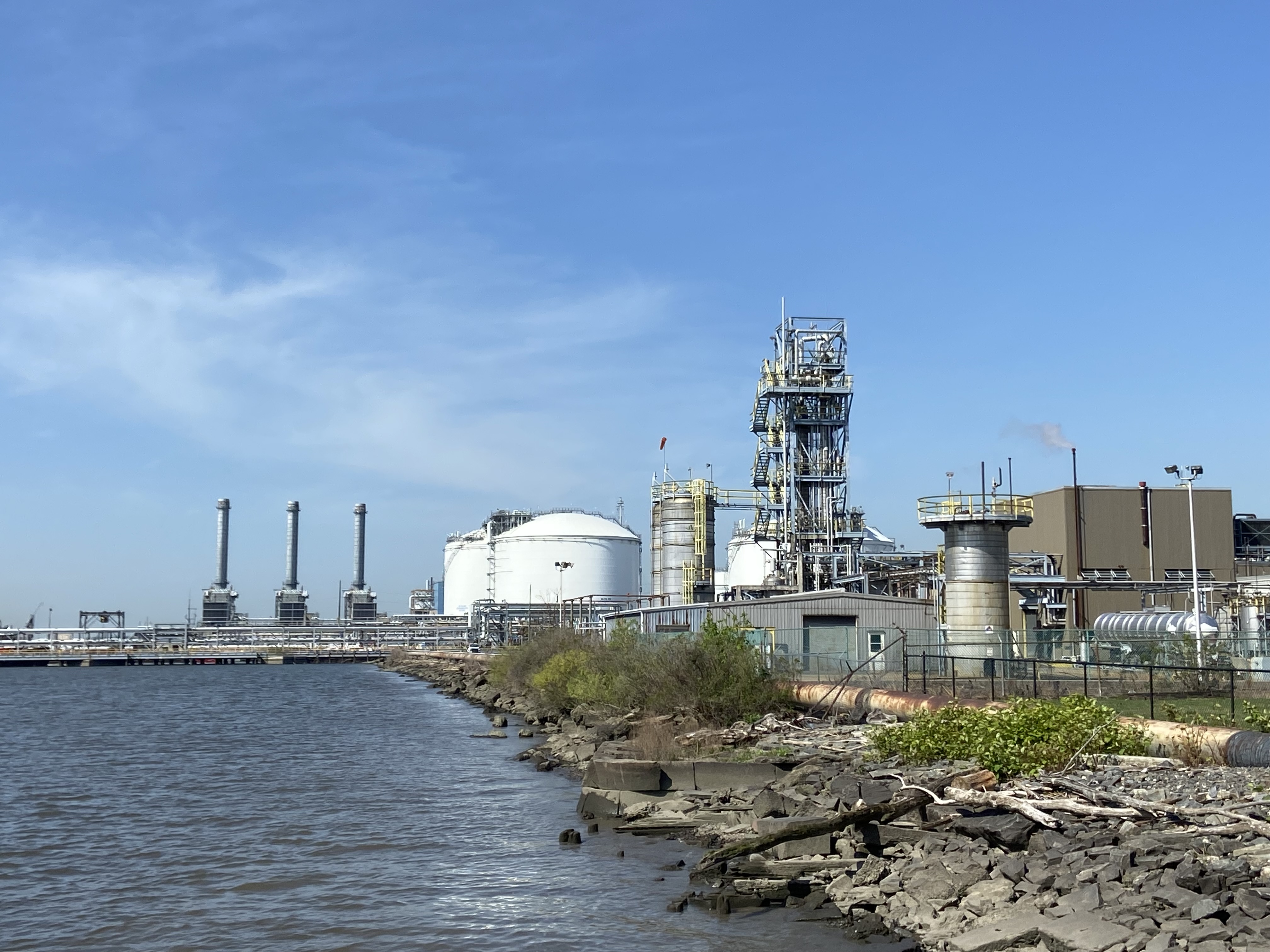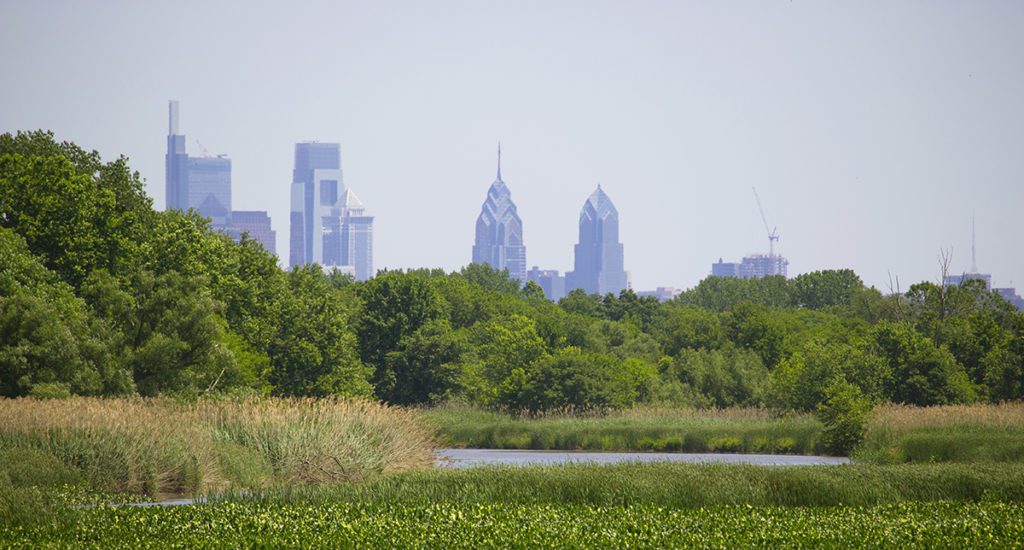Working for Climate Resiliency in Southeastern Pennsylvania: Part II

The impacts of climate change are already being widely felt in the mid-Atlantic region. From wildfire smoke to urban heat islands, to unprecedented flooding during storms, our communities are now facing new climate-related threats each year. Recently, parts of the region were inundated with two month’s worth of rain in two days, leading to widespread flooding, damage to homes and businesses, numerous water rescues, and at least one death in upstate New York.
Over the last decade, local precipitation levels have far outpaced climate change projections, while consistently exceeding the precipitation estimates used in new development projects to prevent future flooding. When industrial facilities use outdated precipitation models, and fail to take climate change and increased rainfall into consideration when designing or expanding facilities, our communities are put at greater risk for additional flooding and contamination of stormwater and soil. Our ability to be climate resilient in southeast Pennsylvania depends, in part, on accurate data being used for permitting decisions and sufficient planning to mitigate climate impacts to our communities.
To this end, Clean Air Council has commented on numerous stormwater pollution permits in Southwest Philadelphia and Delaware County over the past year, noting that increased precipitation and recent major rainfall events are not being adequately taken into account in permitting decisions for industrial sites. Some of these permits are for existing industrial sites in Southeast Pennsylvania, while others are for proposed industrial redevelopments. Click here to view a live map of these and other fossil fuel facilities in the Lower Schuylkill area.
BP Point Breeze Warehouse
The Council’s comments on a proposed warehouse development on a former tank farm at 6310 Passyunk Ave in Philadelphia were acknowledged by the Pennsylvania Department of Environmental Protection (DEP) and resulted in expanded stormwater management and more attention to soil contamination at the site. The Council’s efforts to protect the threatened Northern Red-Bellied Cooter, which has been seen at the site, have also been covered by the Philadelphia Inquirer and Grid Magazine.
Clean Earth of Philadelphia
The Southwest Globe Times featured the Council’s work to improve stormwater management at the Clean Earth of Philadelphia site, a former soil incinerator still handling contaminated soil in Southwest Philly. The Council submitted official comments disputing the facility’s claim that no stormwater had been discharged into the Schuylkill River since 2020 even though, by the facility’s own admission, stormwater at the site generally flows into the Schuylkill River. The Council also questioned the facility’s use of water treatment plant sludge and biosolids as soil additives necessary to reach a certain consistency. Adding additional contaminants to already-contaminated soil is an unnecessary risk to the Schuylkill and Delaware Rivers.
Philadelphia International Airport
The Council’s comment on a proposed stormwater permit at the Philadelphia International Airport was also acknowledged by DEP, resulting in increased scrutiny of the Airport’s pavement replacement project, both by DEP and Tinicum Township. The Council and our supporters pointed out in comments that the Airport had decreased its rainfall estimates in its current application, and pointed out that even the higher estimates do not reflect the last decade of increased precipitation in Philadelphia. The Philadelphia International Airport is located almost entirely in the 100-year floodplain and the entire site crosses the border of Southwest Philadelphia into Tinicum Township in Delaware County. After the Council commented on the permit application, DEP noted that the Airport’s application was not consistent with the host municipality’s stormwater ordinance, which requires higher rainfall estimates. The airport claimed that the specific project was entirely within Tinicum Township, but its application also did not comply with Tinicum Township’s stormwater discharge requirements. Tinicum Township eventually granted the airport a special exemption for the project and DEP acknowledged that it considered the Council’s comments during its permit review.
Darby Creek Tank Farm
The Darby Creek Tank Farm continues to be of great concern to the Council as it is located directly adjacent to residential communities in Southwest Philadelphia and Darby Township as well as the John Heinz Wildlife Refuge.

The stormwater that continues to gather at the site of the Darby Creek Tank Farm is so polluted that it is sent to the DELCORA water treatment plant and sewage incinerator in Chester, PA, which is also a major pollution source in a recognized Environmental Justice (EJ) community. The Council is currently working with nearby community organizations to advocate for the cleanup and sustainable redevelopment of this site, large portions of which are located in the 100-year floodplain
Marcus Hook Terminal, Marcus Hook
Recently the Council submitted comments on both the water pollution discharge permit and the hazardous waste storage permit for the Marcus Hook Terminal in Marcus Hook, PA, operated by Energy Transfer. Our comments raised concerns about a storage tank that discharges industrial waste directly into the Delaware River during heavy precipitation events. The Council demanded more accurate accounting of these potentially dangerous discharges and expanded stormwater storage capacity at the Marcus Hook Terminal. The Council is also concerned that the Marcus Hook Terminal continues to store hazardous waste generated when the facility was an oil refinery. Storing hazardous waste from a historic operation so close to the Delaware River is an environmental risk. In a response letter, Energy Transfer acknowledged that it is exploiting a regulatory loophole that allows hazardous waste to remain onsite without restriction because Energy Transfer left the hazardous waste where it was generated, rather than taking it to a proper storage area. The Marcus Hook Industrial Complex in Marcus Hook, PA is currently enrolled in the EPA’s hazardous waste cleanup program and the Council will continue to demand the site remediate soil and groundwater pollution in the effort to protect local public health.
East 10th St site, Marcus Hook
The Council recently opposed the U.S. Environmental Protection Agency’s withdrawal of the East 10th St. site in Marcus Hook, PA from the National Priorities List (NPL) of the EPA’s Superfund program. In the early 1900s this site was a large rayon manufacturing plant, which later transitioned to cellophane manufacturing before closing in 1977. The site then became a disposal area for hazardous substances like asbestos and was classified as a superfund site in 1994. If the site is taken off the superfund list, the cleanup will be managed entirely by Pennsylvania DEP, which approved a cleanup plan at the site that proposes to discontinue groundwater monitoring. The specific redevelopment proposal for this site has not been made public and could potentially cause significant flooding and dangerous pollutants to be dispersed into the Delaware River and surrounding communities. The lasting effectiveness of the ongoing land cleanup must be monitored by the EPA. As precipitation increases in this coastal area of Southeastern Pennsylvania and the need for expanded greenspace grows, the Council will continue to advocate for more environmentally-conscious development as well as the cleanup of former and current industrial facilities. The Council is actively engaging with local organizations in this area to keep them informed of polluting industrial proposals.
Climate Resilient Communities Project
In addition to commenting on and engaging residents in commenting on permits, the Council is working directly with residents through our Climate Resilient Communities Project. Earlier this year, the Council hired OLIN, a landscape architecture and urban design group, to model potential climate impacts on communities in Southwest Philadelphia and along the Delaware River in Delaware County. Specifically, this modeling looked at the potential impacts of major storms, storm surge, and flooding along the tidal Delaware and Schuylkill Rivers. The studies looked at the many industrial facilities in this region, and potential impacts to those facilities, including leaks and contamination that could impact surrounding residential neighborhoods. The Council worked with community leaders to form a Stakeholder Advisory Committee on this project, and met for the first time in July to review the initial findings. In the coming months, research findings will be presented to the larger community with the opportunity to envision local green infrastructure projects to mitigate the impacts of climate related heat and flooding. Such projects might include new green spaces or enhancements to existing parks, rain gardens, raised veggie gardens, trees and other plantings to cool neighborhoods down and also mitigate stormwater runoff and flooding. Residents of Southwest Philadelphia and southern Delaware County who are interested in envisioning together what these projects might be, and putting them into place, should contact Russell Zerbo, Advocate rzerbo@cleanair.org for more information.

